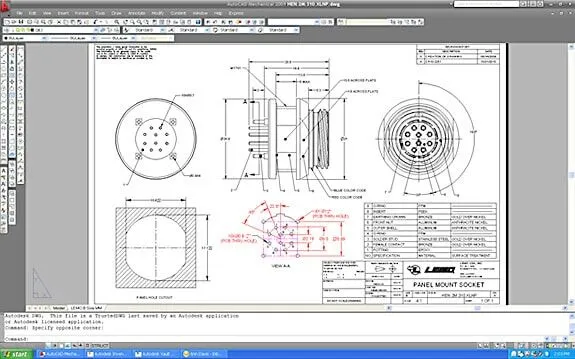What Is Open BIM? And Why Is It Important?

We’ve been providing 3D CAD Services since 1988!
Our professional 3D designers, engineers, and architects are qualified to perform any 3D CAD design service you require and can help you solve your problems with your product design and drafting.
We work with architectural drawings, manufacturing drawings, the auto industry drawings, aerospace drawings, defense department drawings, point clouds, 3D scan meshes, and any other types you may have, including all government services.
When you need any work on a 3D CAD file, we can do it fast and at a very low cost.
We can convert hardcopy documents into any 3D CAD program such as Revit, SolidWorks, CATIA, and other 3D software.
We have been providing 3D CAD services and 3D modeling services for many years, and we are experts at helping contractors, architects, and the construction community, as well as manufacturing, aerospace, defense and other users of 3D CAD technology.
Innovative firms across the globe rely on us when their CAD models must be CAD Perfect™.
We have expertise with modern CAD software systems, but we also cad conversion services for any legacy and exotic CAD file types you can imagine.
We can convert all the models produced by us into “neutral” 3D CAD formats.
“Neutral” 3D CAD Formats
So-called, “neutral” file formats like IGES and STEP were specifically created for the neutral exchange of 3D CAD data across different CAD packages. IGES was created in 1979 by a group of users (including Boeing and GE) with support from the Department of Defense (DoD) and NIST to exchange data more easily to simplify the product development process. Since the late ’80s, the DoD has required that all Digital Project Manufacturing Data (PMI) be deliverable in IGES format.
STEP is an ISO standard released in 1994 to be the “successor” to IGES. While widely used it has never totally replaced the IGES format.
Parasolid is the closest neutral format for the CAD files, produced by Solidworks and other CAD systems based on the Parasolid kernel.
ACIS is used by many CAD (like AutoCAD and Inventor) systems as a geometry kernel.

Yamaha motor model we used while creating 3D CAD drawings for motor cover
CAD Service Outsourcing
You can consider us an extension of your in-house team. We have no restrictions on the size or quantity of drawings for our 3D CAD outsourcing services. We treat each customer with professional courtesy, whether they have one drawing or many drawings.
We appreciate each client we have – it does not matter if you represent one of the largest CAD companies or if you are a single consumer. Every 3D CAD service order is important to us.
If you have CAD drawings and need to prepare these parts for 3D printing –
Finally, CAD / CAM Services offers you a no-hassle guarantee.
If you are not completely satisfied with it, just let us know and we will fix it within 24 hours at no additional cost! If you are not 100% satisfied with our work, we will refund your money. No hassles, no debates, 100% Customer Satisfaction Guaranteed!
Recent Posts


CAD Outsourcing Doesn’t Have to Be Done In India
CAD Outsourcing Doesn’t Have to Be Done in India Do a Google search for “CAD Outsourcing” and what you’ll find is lots of firms located in India, which is fine if you’re prepared to go off-shore for CAD services. But what if your U.S. based company prefers to stay a...

AutoCAD Fiber Optic Designs & Drawings
Before proceeding forward in explaining the affinity between AutoCAD and Fiber Optic, it would be prudent to rationalize the utility of optical cables. When communicating between systems, either via the internet or via an internal network system, a medium needs to be...

CAD Outsourcing: How to Get the Most Out of Engineering
In today’s competitive market, companies need as much help as possible. If you want to take a larger market share, you can start by outsourcing some of your work. This is a quick way to expand your engineering power without onboarding and training a new staff. This...
